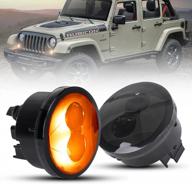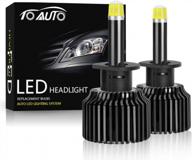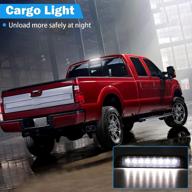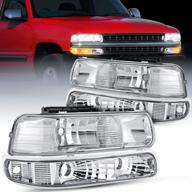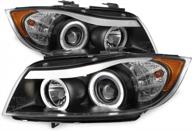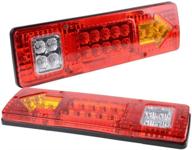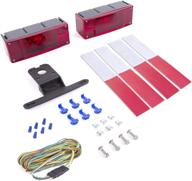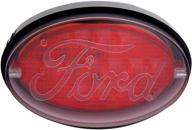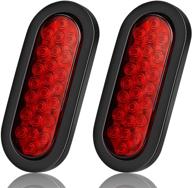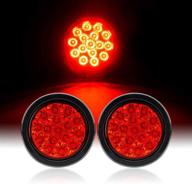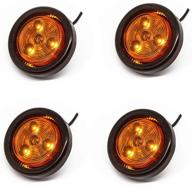Keep Your Trailer Lit and Legal While Towing
Properly lighting your trailer is an important safety and legal requirement when towing. Having the right lights installed and functioning properly helps other drivers see your trailer, and it also allows you to signal turns and brake appropriately. Additionally, most states require specific lighting setups to legally tow trailers on public roads.
Similar products
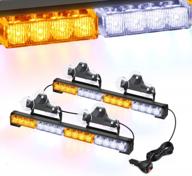

44 Review

Lighting Requirements for Towing Trailers
Though regulations vary slightly by state, there are general federal standards for trailer lighting that apply across the US:
- Two rear red brake/tail lights
- Two rear red reflectors
- Two amber side marker/clearance lights near the front
- Two red side marker/clearance lights near the rear
- White license plate light
- Turn signals and brake lights if the trailer blocks signals from the tow vehicle
Additionally, if your trailer is over 80 inches wide, three amber identification lights are required across the front top.
How to Install Proper Trailer Lighting
Here are some tips for installing suitable trailer lights:
- Use a 4-way flat connector for basic lighting needs or a 5-way connector to also power electric trailer brakes.
- Make sure all wiring connections are weatherproof using dielectric grease.
- Follow the trailer lighting diagram in the owner's manual for proper light placement and wiring.
- Mount lights at appropriate heights to meet regulations.
- Secure all wires and avoid running over or pinching them.
Another interesting products
Inspecting and Maintaining Trailer Lights
To keep your trailer lighting system in proper working order:
- Test all lights before each trip - brake, turn, clearance, etc.
- Check wiring for frays or damage.
- Make sure connector pins are clean and secured.
- Replace any burnt out bulbs immediately.
- Consider installing LED lights for longer life and brightness.
- Re-grease connections yearly to prevent corrosion.
Properly illuminating your trailer is crucial for safe towing. Following trailer lighting regulations also helps avoid fines or violations. Investing in a robust lighting system and performing regular inspections ensures you stay visible and legal on the road.
Essential Lighting to Improve Trailer Safety
Having the proper lighting set up on your trailer is crucial for staying safe on the road. The right combination of lights improves visibility, helps other drivers see your intentions, and meets legal requirements.
Key Types of Trailer Lights
Here are some of the most important trailer lights to increase safety:
- Tail/Brake Lights - Red rear lights indicate you are stopping and allow drivers behind you to react.
- Turn Signals - Amber blinking lights tell other drivers when you are turning to prevent collisions.
- Side Marker Lights - Amber side lights make your trailer more visible to passing vehicles.
- Clearance Lights - Red and amber lights across the top help show the trailer's width and height.
- License Plate Light - White light illuminates the license plate for nighttime visibility.
Visibility and Legal Compliance
Having all the necessary functioning trailer lights:
- Makes your trailer much more visible to other motorists at night and in low visibility conditions.
- Meets federal and state laws for minimum trailer lighting requirements.
- Avoids the safety hazards and legal consequences of non-working lights.
Tips for Improving Trailer Lighting
Follow these tips for optimal trailer lighting:
- Use high-quality LED lights for brightness, efficiency, and longevity.
- Ensure lights are mounted properly at regulated heights.
- Check lights before each trip and replace any burnt out bulbs.
- Use dielectric grease on connections to prevent corrosion.
- Confirm electrical wiring has no breaks and solid connections.
Investing in robust trailer lighting improves visibility and compliance for a safer towing experience.
Top products in 🚚 Towing & Trailer Lighting
Avoid Annoying Other Drivers - Proper Trailer Lights
Having inadequate or non-working trailer lights can create issues for other drivers on the road and lead to dangerous situations. Properly lighting your trailer helps avoid frustrating and jeopardizing fellow motorists.
Glare from Trailer Lights
Excessively bright or poorly aimed trailer lighting can glare into other drivers' eyes, temporarily blinding them. To avoid this:
- Angle lights slightly downwards and avoid pointing them straight back.
- Use LED bulbs that provide high visibility but less glare.
- Check that brake and turn signal lights are not excessively bright.
- Make sure lights are clean from dirt and oxidation to diffuse light better.
No Turn Signal Visibility
If turn and brake signals are blocked when your trailer is hitched, other drivers can't see your intentions. To fix this:
- Install supplemental turn, brake and hazard lights on the rear of the trailer.
- Use extenders to move turn signals to an unobstructed location if possible.
- Check that trailer lights sync properly with tow vehicle signals.
Lack of Trailer Illumination
Poorly lit trailers are safety hazards for other drivers. Make sure:
- All rear position lights and license plate lights are working.
- Side marker lights are installed and functional.
- There are clearance and identification lights across the top.
- Lights are clean, aimed properly, and using quality bulbs.
Legality of Trailer Lighting
Inadequate trailer lighting violates laws and regulations. Be sure to:
- Check local regulations for required trailer lighting.
- Perform regular inspections to confirm proper operation.
- Immediately replace any burnt-out bulbs.
Taking the time to properly light your trailer helps avoid endangering and annoying other drivers on the road.
See and Be Seen - Visibility Solutions for Towing
When towing a trailer, being visible to other drivers is crucial for safety. Proper lighting and visibility accessories can help make sure you are seen while also improving your own view.
Trailer Lighting Visibility
Increase rear visibility with:
- Bright, working trailer tail, brake, and turn signals
- Properly mounted side marker lights
- Clearance and identification lights across the top
- Clean, aimed lights using quality LED bulbs
Supplemental Visibility Accessories
Enhance visibility further with:
- Reflective Tape - Helps reflect light from vehicle headlights at night.
- Light Bars - Auxiliary LED lights boost rear illumination.
- Flags - Tall flexible poles with bright colors attract attention.
- Side Mirrors - Extended mirrors improve rear facing field of vision.
Seeing Your Surroundings
Improve ability to see with:
- Properly adjusted side mirrors and towing mirrors.
- Rearview camera kit for hitch alignment and reverse driving.
- Blind spot mirrors for expanded rear visibility.
- Back up lights and sensors to see behind the trailer.
Pre-Towing Visibility Inspection
Check:
- All lights work and are clean.
- Supplementary visibility accessories are secured.
- Side mirrors provide optimal rear view.
- Cameras and sensors are functioning.
Proper visibility equipment helps make sure you can see and be seen when towing for maximum safety.
Protect Your Investment - Trailer Wiring Basics
Proper electrical wiring is essential for a functional trailer lighting system. Understanding key wiring fundamentals helps protect your investment by preventing damage and dangerous faults.
Wiring Circuit Requirements
Basic trailer wiring requires:
- 4-wire flat connector for basic lighting: running lights, brake lights, turn signals.
- 5-wire flat connector adds a powered auxiliary circuit for electric brakes.
- 7-wire round connector supports auxiliary power and backup lights.
| Wire Color | Function |
|---|---|
| White | Ground |
| Brown | Running Lights |
| Yellow | Left Turn Signal and Brake |
| Green | Right Turn Signal and Brake |
| Blue | Electric Brakes (if equipped) |
Wiring Maintenance
Regular wiring maintenance includes:
- Inspecting for damaged insulation, corrosion, loose connectors.
- Removing dirt and oxidation from connectors.
- Testing circuits for functionality.
- Replacing worn or defective parts.
Installation Best Practices
For quality wiring installation:
- Use proper gauge wire to handle needed power load.
- Separate and secure wires to avoid pinching or tangling.
- Apply dielectric grease inside connectors.
- Heat shrink connections for waterproofing.
- Follow harness diagrams for correct layout.
Knowing fundamental trailer wiring principles helps install and maintain a robust system for lighting functionality and safety.
Trouble-Free Towing Starts with Reliable Trailer Lights
Properly functioning trailer lights are critical for safe, uneventful towing. Investing in quality lights and performing regular maintenance helps avoid lighting issues on the road.
Common Trailer Lighting Problems
Typical problems include:
- Burned out bulbs from vibration or weather exposure.
- Corroded or loose wiring connections leading to flickering or no lights.
- Faulty grounds causing intermittent electrical shorts.
- Melted or pinched wires interrupting circuits.
- Moisture infiltration leading to lighting malfunctions.
Choosing Durable Lights
Select lights built to handle towing conditions:
- LED bulbs last longer than traditional incandescent.
- Recessed or enclosed lamps protect from weather and debris.
- Flexible mounting arms absorb vibration.
- Waterproof housings and connectors prevent moisture damage.
Regular Inspections and Maintenance
Extend system life through actions like:
- Testing lights before each trip.
- Replacing bulbs immediately when burnt out.
- Cleaning corroded wires and connectors.
- Inspecting wiring insulation for cracks.
- Checking grounds are solid.
Quality lights and vigilant maintenance lead to years of trouble-free trailer towing. Don't get stranded with malfunctioning trailer lighting.
Outsmart Towing Issues with Smart Trailer Lighting
Smart technology and lighting innovations provide ways to avoid many common trailer lighting headaches and improve safety.
Adaptive Brake Lights
Smart brake lights automatically increase brightness intensity when braking hard. This alerts drivers behind you to slow down faster.
Integrated Turn Signals
Instead of separate turn/brake lights, LED strips extend in the direction turned. No more worrying about burned out bulbs.
Wireless Communication
Bluetooth and wireless connections synchronize trailer lights with tow vehicle controls without physical wiring.
- No risk of corrosion.
- Easy plug and play installation.
- Avoidance of short circuits.
Humidity Sensors
Sensors turn on interior trailer lights when humidity is high to prevent condensation and corrosion.
Reverse Guidance
Back up cameras with dynamic overlays guide hitch alignment and indicate distances. Result: No more frustration backing up.
Diagnostic Systems
Onboard computers monitor trailer lighting operation and report any faults to proactively address issues.
Auto-Leveling
Electric actuators automatically keep trailer balanced when loading/unloading. Reduces risk of tipping accidents.
Embrace smart technologies for an easier, lower stress towing experience. Let the tech do the worrying for you!
How to use your Amazon Prime to buy "Towing & Trailer Lighting"
Having an Amazon Prime membership provides convenient access to a wide range of "Towing & Trailer Lighting" products with fast shipping. Here are some tips for using Prime to purchase trailer lighting equipment and supplies.
Search for Towing Lighting Options
The Amazon search bar is very effective for finding different types of trailer lighting. Try searches like:
- "trailer brake lights"
- "trailer connector kit"
- "LED trailer clearance lights"
Amazon will display available Prime products matching your search terms.
Filter Prime Eligible Items
When browsing search results or specific product categories, you can filter items to only show Prime eligible ones. Look for the "Prime Eligible" checkbox on the left side of the page and select it.
Look for the Prime Logo
When searching or browsing, Prime products will display the Prime logo. This makes it easy to quickly identify items available for fast shipping.
Enable 1-Click Ordering
For the fastest checkout, enable 1-Click ordering in your Amazon account settings. Then you can skip entering shipping and payment info every order.
Check Estimated Delivery Date
When viewing a Prime product, you can see the estimated delivery date range. This helps know when your order will arrive.
Using Prime for trailer lighting purchases provides quick access to thousands of products with free two-day shipping. Follow these tips to easily find and order the towing supplies you need.
What Are The Best Towing And Trailer Lighting Products For My Vehicle??
There are many towing and trailer lighting products available for your vehicle. Here are some of the best options:
These products offer a range of features and benefits, from wireless capabilities to easy installation. Consider your specific needs and preferences when choosing the best towing and trailer lighting products for your vehicle.
What Are The Differences Between Wireless And Wired Towing Lights??
Wireless and wired towing lights have some key differences. Here are some of the main differences between the two:
Wireless towing lights:
Wired towing lights:
When choosing between wireless and wired towing lights, consider your specific needs and preferences. Wireless towing lights offer the convenience of not needing a wired connection, but may be more expensive and less reliable than wired towing lights. Wired towing lights require a wired connection, but are generally less expensive and more reliable.





